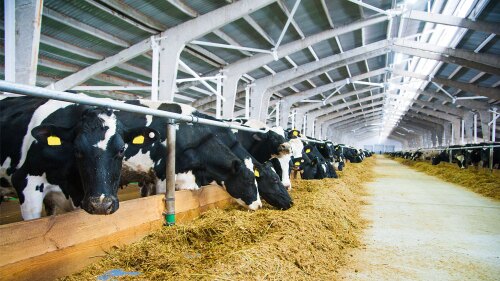Grain farmers experience a handful of unique risks on the job. While one of the biggest safety concerns is grain bin suffocation, there are numerous other risks on grain farms that deserve attention. From machinery operation to chemical handling, taking safety seriously is crucial. Learn more about how to enhance safety on your grain farm.
Fires and Explosions
Grain farms produce large amounts of dust through handling and harvesting. Grain dust is highly combustible, meaning it burns or explodes very easily. Grain dust explosions are extremely dangerous, often resulting in fatalities and significant damage. According to the National Grain and Feed Association, dust Ignition requires three elements: fuel (dust), source (spark), and an oxidizing agent (oxygen in air). Dust explosions require these additional elements: confinement (leg, conveyor, tunnel), and dispersion in the air (first explosion).
To prevent these equipment fires while harvesting, be sure to regularly clean the engine, turbocharger, and exhaust systems. Eliminate build up on your farming equipment by blowing off excess dust and using power washing tools. According to an Oregon State University study, 41% of combine fires are caused by crop residue. Operate combines at appropriate speeds. Increased harvesting speeds puts additional stress on the engines significantly increasing the risk of fires. Allow equipment to cool before refueling or parking the equipment in a machine shed. Preventative maintenance and lubrication are crucial for reducing fire risk and having a smooth harvest season
To reduce the risk of grain dust explosions, reduce sources of ignition and reduce dust accumulations. Develop and follow a regular cleaning and housekeeping schedule. Cleaning methods should not produce additional dust clouds unless all equipment is shut down and there are no ignition sources. Follow manufacturer guidelines for routine lubrication for bearings and periodically monitor bearing temperature. Strictly enforce no smoking on your grain farm. Farmers should regularly monitor dust levels and keep up on electrical equipment maintenance.
Falls from heights
Grain farmers and workers perform various tasks that include working on platforms, ladders, buildings, machinery, and more. Falling from heights is a leading cause of farming injury and fatality. Don’t let the risk of a fall get in the way of keeping your farming operations from running smoothly.
There are many ways to protect your safety without giving up on the tasks at hand. Take proper safety precautions such as installing sturdy guardrails, using fall arrest systems, and performing regular inspections. Always use three points of contact while getting into or out of equipment and when using ladders. Two hands and one foot, or one hand and two feet are appropriate contact methods that lead to safer farming.
Equipment handling
Multiple forms of equipment are used daily on farms as a helpful tool. Though useful, mechanical equipment can be very dangerous. Equipment like augers and conveyors are important tools in grain storage, facilitating the movement and transfer of grain within storage structures. These helpful tools present serious entanglement and amputation hazards to workers if not handled properly. Workers can easily get their limbs caught in poorly guarded moving parts, causing serious injury.
Minimize injury by ensuring proper guarding of moving parts on tools like augers and conveyors. Providing comprehensive training for all workers including emergency procedures. Promote the use of appropriate personal protection equipment and safe clothing. Maintain regular equipment inspections and repairs. Spread awareness through safety signage and open communication about potential hazards.
Hazardous fumes
Another risk grain farmers face is airborne contaminants in storage facilities. Chemical hazards are typically most prominent in the spring and summer during pesticide and herbicide application. When pesticides and other chemicals are used on the farm for things like insect control, they create toxic risks for those exposed to it. Workers in these environments might be exposed to harmful levels of mold, chemical fumigants, and increased carbon monoxide levels with insufficient oxygen from moldy or out of condition grain. Exposure to these toxic chemicals can lead to severe health issues both long term and short term. Long-term risks include permanent damage to the central nervous system, heart and vascular diseases, lung edema, and cancer.
Farmers can minimize this risk by testing the air in a grain bin before entering to check for combustible and toxic gases. Testing the air will help determine if there is sufficient oxygen in the enclosed space. If toxic gases are detected by testing, vent hazardous atmospheres to ensure that combustible and toxic gas levels are reduced to safe levels, and that enough oxygen is present. If you ever find yourself in a situation where dust is present, use a NIOSH approved and certified N-95 dust mask to protect yourself from inhaling it. Proper storage of the respirator is necessary to provide adequate protection.
By taking a safety-first approach in your farm operations, grain farmers can promote a protected working environment. Regular training, proper equipment use, and a proactive attitude towards safety are necessary to minimize risks and protect the well-being of everyone on the farm.
Contact your risk management consultant to get a customized plan for your grain farm.
Sources:
osha.gov - Grain handling overview
ngfa.org - Combustible Dust and OSHA Housekeeping Requirements
oregonstate.edu - Preventing and Responding to Combine Fires






